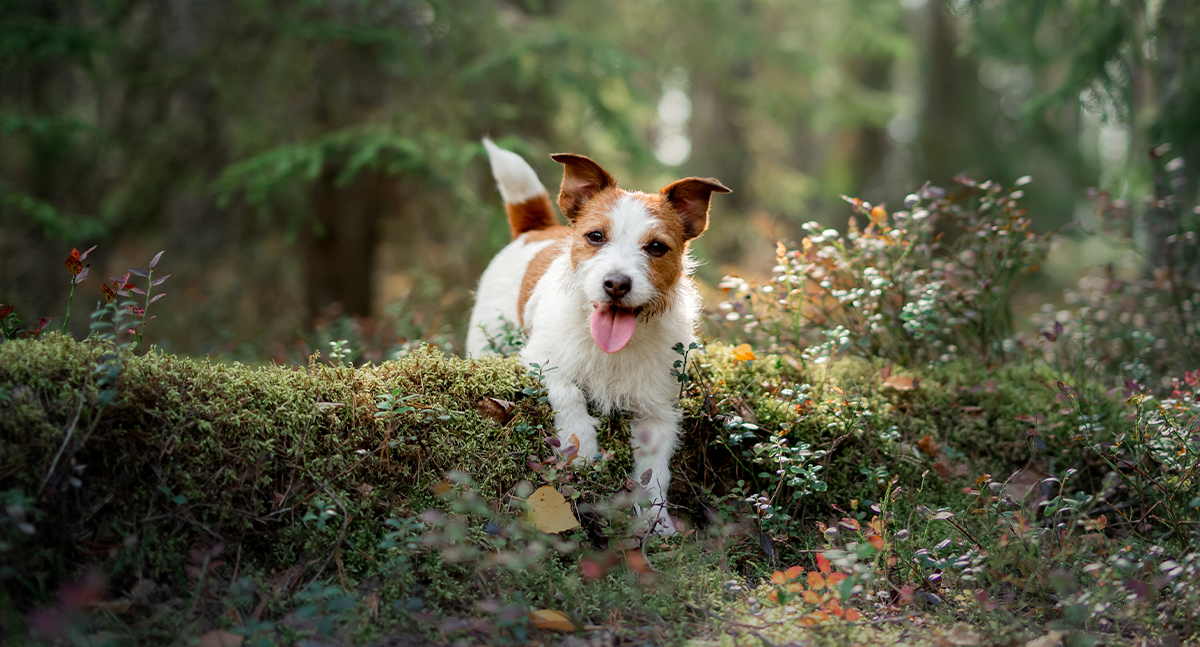Keeping Safe on Spring Dog Walks

After a long cold winter, the arrival of Spring is always a welcome relief. Finally, dog walks are warmer and much prettier!
Spring walks give you and your pooch a chance to see the flowers, spot new wildlife and watch nature blossom again. However it’s important to be aware of the changes this season brings.
Here are our top tips for fun and safe Spring Walks:
Be Prepared for the Rain!
Spring is certainly warmer but unfortunately often rather wet and rainy. Keep your furry friend snuggled up in a fashionable weatherproof raincoat.
If you are struggling to find the perfect fit for your pooch, head into your local Pets Corner store where our trained staff can help you.
Pssst: Don’t forget your umbrella and wellies!
Be Aware of Dangerous Plants
The change in weather brings new growth of plants. Daffodil bulbs, Crocus, Bluebells, Hyacinths, Iris, and Lily of The Valley pop up in early spring and bring colour to our gardens and parks. However, these common plants can be dangerous to our canine companions.
If ingested all of these can cause stomach upsets and, in some cases, severe illness. Most sensible adult dogs are simply not interested in munching on these flowers; however, our puppies can be very curious so keep an eye on what they are getting up to on their walks.
Pssst: Remember if you have a new puppy, The Control of Dogs Order 1992 states you must have your name and address inscribed on a tag or disc. For more advice on walking equipment, check out our Guide on Collars and Leads.
Avoid Slugs and Snails
Slugs and snails thrive in the warmer damp conditions of Spring, so there will likely be more of these slimy creatures in your garden and walking routes. Whilst snuffling in the undergrowth and eating grass our dogs can accidentally eat slugs and snails. Some dogs will even gobble up these molluscs on purpose…
Slugs and snails should be avoided as they spread the parasite Lungworm. This dangerous parasite spreads around the body affecting the respiratory tract, heart, and various other organs. If left untreated this parasite can be fatal.
Preventing lungworm is key! So, avoid obvious areas with slugs and snails and make sure to discuss regular treatment options with your local vet.
Pssst: Many keen gardeners will put down slug poisons and baits to avoid their flowers getting destroyed. Be aware of these in the areas you take your pooch, as these are toxic and can cause serious illness.
Be Prepared for Parasites
Fleas and ticks are most definitely a bigger threat during the warmer spring months. These pesky parasites can be found in our local parks, woods, forests and even our own gardens.
Fleas lead to discomfort, itching and can result in allergic reaction. This parasite reproduces very quickly so just a few fleas in your dog’s coat, can easily lead to an infestation in your home.
Prevention is key when it comes to dealing with parasites. Ensure your dog is regularly being treated with a flea and tick prevention product.
For more advice on treating parasites, read our guide on Fleas and Worms.
Look Out for Livestock!
Spotting lambs playing in fields is always a heart-warming sight. However, during walks it is essential to be aware of the presence of livestock around you.
Dogs can be extremely stressful and worrying for many farm animals. Some larger animals may react defensively if being bothered by a dog which can lead to serious injury. It is worth remembering farmers also have the right to shoot dogs if they are seen to worry their sheep.
Keep your pooch safely on their leash and make sure you keep a tighter grip on their lead around livestock areas.
So, there you have it some top tips to keep everyone safe on their beautiful Spring Walks. For tips for the colder seasons, check out our Autumn Walking Guide.


